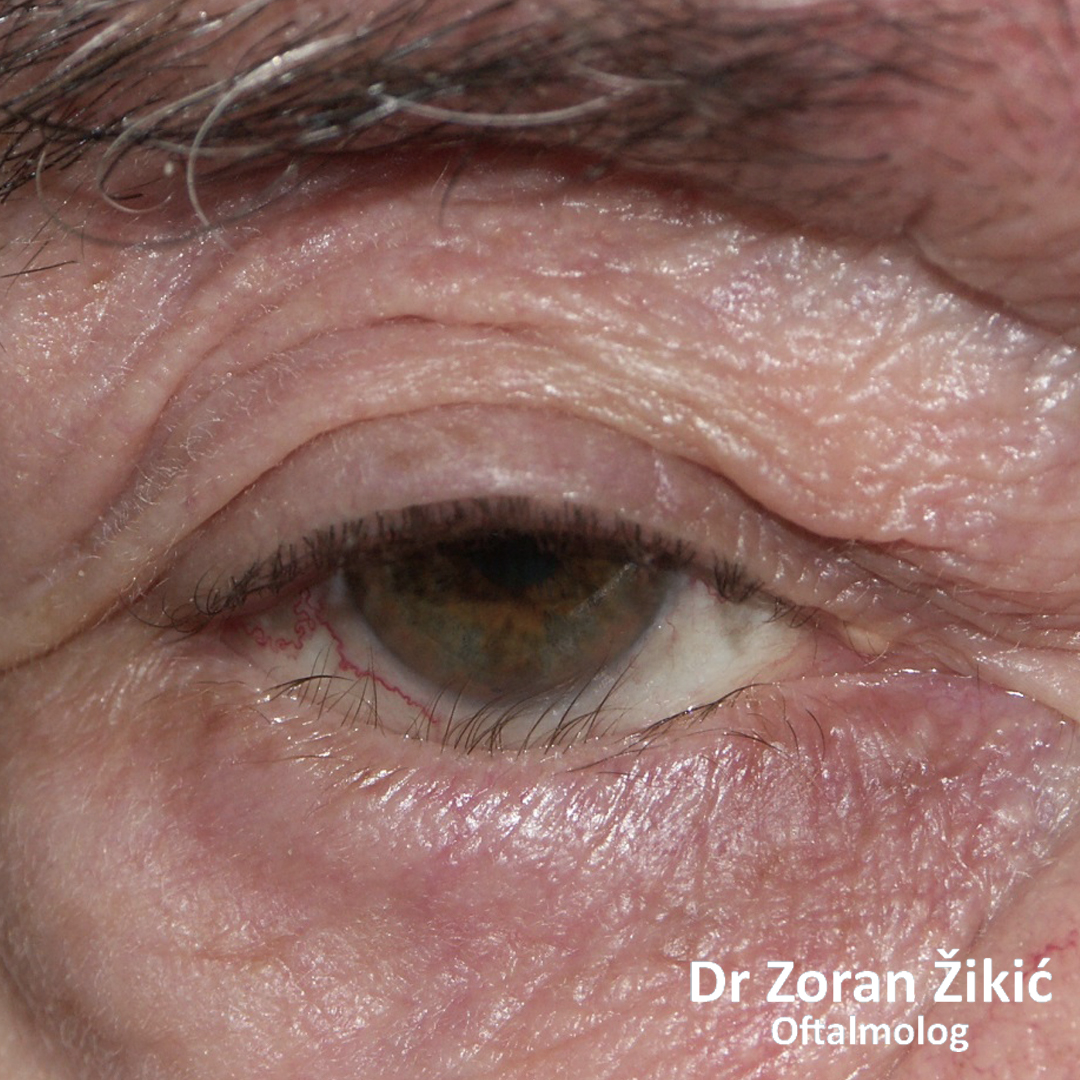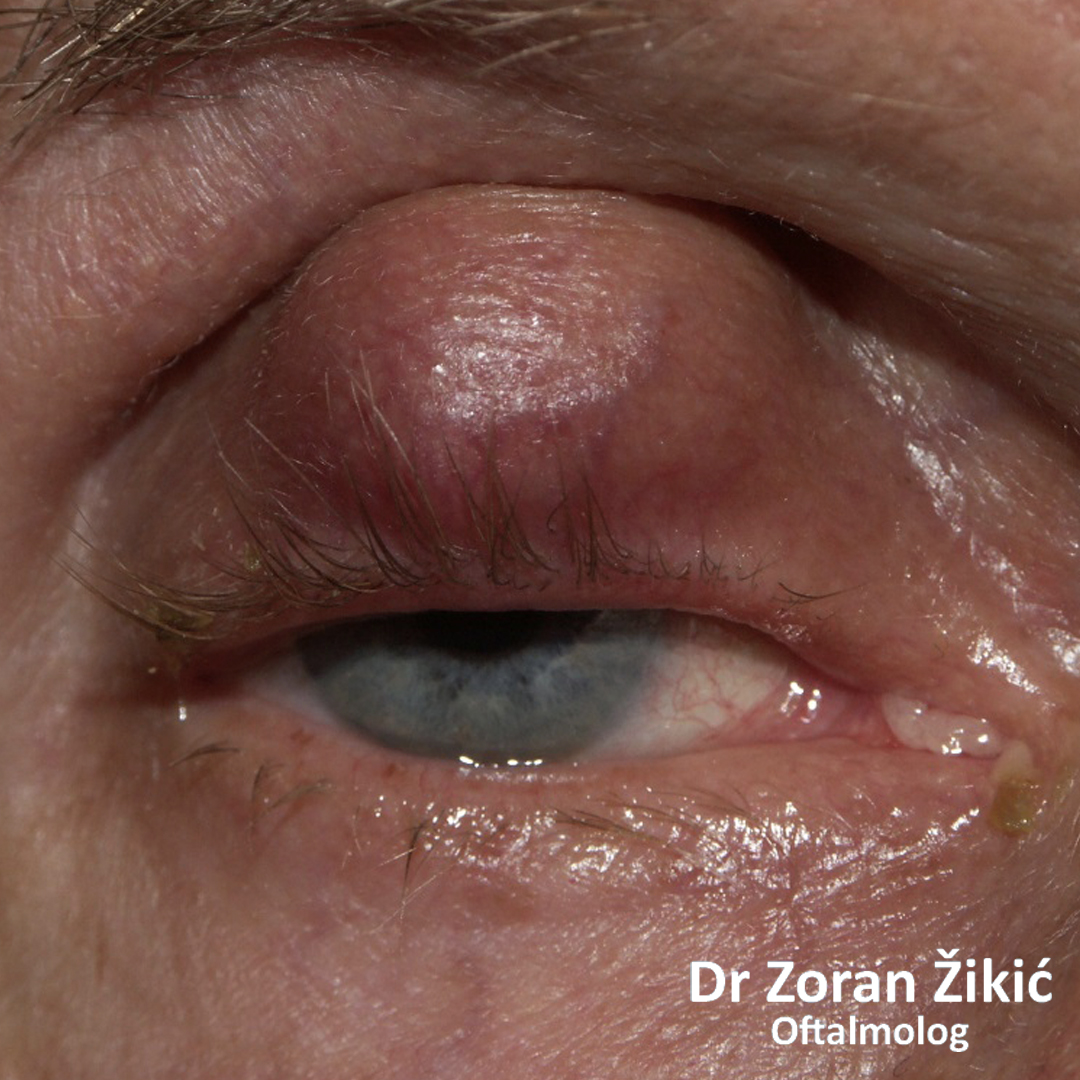[-]
In infants and small children, we encounter different congenital eyelid abnormalities, from incomplete development to problems with position and function.
Congenital drooping of the upper lid (ptosis) is usually caused by incomplete development of the levator muscle (the muscle that elevates the upper lid). This condition can impede the development of normal vision on the side of the affected lid.
The decision regarding the timing and method of ptosis correction depends on the degree of ptosis in relation to the visual axis (pupil), the strength of the levator muscle and the age of the child.

 Congenital ptosis of the right upper lid (the lid covers the pupil completely)
Congenital ptosis of the right upper lid (the lid covers the pupil completely) Congenital ptosis of the right upper lid (the lid margin is at the top of the pupil)
Congenital ptosis of the right upper lid (the lid margin is at the top of the pupil)Inversion (entropion) or eversion (ectropion) is most frequently encountered in the lower lid, as a consequence of eyelid instability, caused by stretching of its tissues with age. Less often is it caused by trauma or inflammatory diseases, followed by scarring of the skin and / or mucosal lining of the eyelid.
Entropion causes the eyelashes to rub over the eye, which causes significant discomfort and may lead to an infection. In an ectropion, the mucosa of the lid is constantly exposed to the environment, causing it to dry and become inflammed.
 Ectropion of inner part of the lower lid
Ectropion of inner part of the lower lid Entropion of the lower lid with consequent redirection of the lashes toward the eye
Entropion of the lower lid with consequent redirection of the lashes toward the eyeTumors of the eyelids and periocular region can be benign and malignant. In children, we, most frequently, encounter benign lesions like hemangioma or dermoid cysts. A chalazion is an inflammatory cyst of the sebaceous glands (Meibomean) in the eyelid.
 Chalazion
Chalazion Hemangioma
Hemangioma Dermoid cyst
Dermoid cyst Hemangioma of the right side of the face in an infant. Voluntary opening of the right eye is not possible
Hemangioma of the right side of the face in an infant. Voluntary opening of the right eye is not possible A large cyst (benign lesion) of the upper lid, which mechanically displaces the lid downwards, over the pupil
A large cyst (benign lesion) of the upper lid, which mechanically displaces the lid downwards, over the pupil Malignant tumor of the lower lid
Malignant tumor of the lower lid Malignant tumour of the inner angle of the eyelids, in an advanced stage
Malignant tumour of the inner angle of the eyelids, in an advanced stage